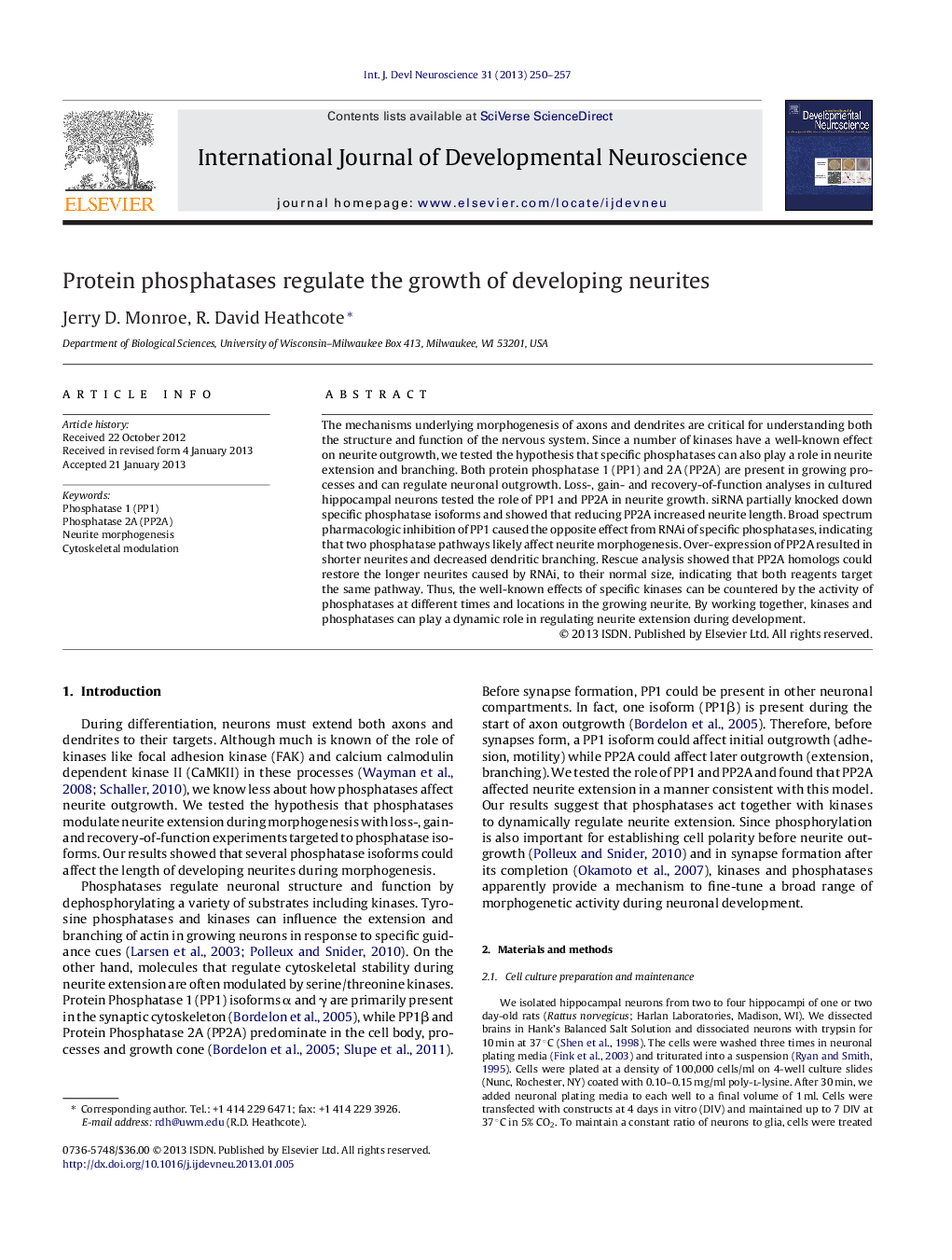| Article ID | Journal | Published Year | Pages | File Type |
|---|---|---|---|---|
| 2786172 | International Journal of Developmental Neuroscience | 2013 | 8 Pages |
The mechanisms underlying morphogenesis of axons and dendrites are critical for understanding both the structure and function of the nervous system. Since a number of kinases have a well-known effect on neurite outgrowth, we tested the hypothesis that specific phosphatases can also play a role in neurite extension and branching. Both protein phosphatase 1 (PP1) and 2A (PP2A) are present in growing processes and can regulate neuronal outgrowth. Loss-, gain- and recovery-of-function analyses in cultured hippocampal neurons tested the role of PP1 and PP2A in neurite growth. siRNA partially knocked down specific phosphatase isoforms and showed that reducing PP2A increased neurite length. Broad spectrum pharmacologic inhibition of PP1 caused the opposite effect from RNAi of specific phosphatases, indicating that two phosphatase pathways likely affect neurite morphogenesis. Over-expression of PP2A resulted in shorter neurites and decreased dendritic branching. Rescue analysis showed that PP2A homologs could restore the longer neurites caused by RNAi, to their normal size, indicating that both reagents target the same pathway. Thus, the well-known effects of specific kinases can be countered by the activity of phosphatases at different times and locations in the growing neurite. By working together, kinases and phosphatases can play a dynamic role in regulating neurite extension during development.
► Loss, gain and rescue experiments show phosphatases affect neurite length. ► Phosphatases 1 and 2A can have opposite effects on neurite length. ► Models are proposed for the mechanisms of PP1 and PP2A during neurite growth. ► Potential mechanisms include phosphatase activity on several well-known kinases. ► Phosphatases acting with kinases can dynamically regulate neurite length.
